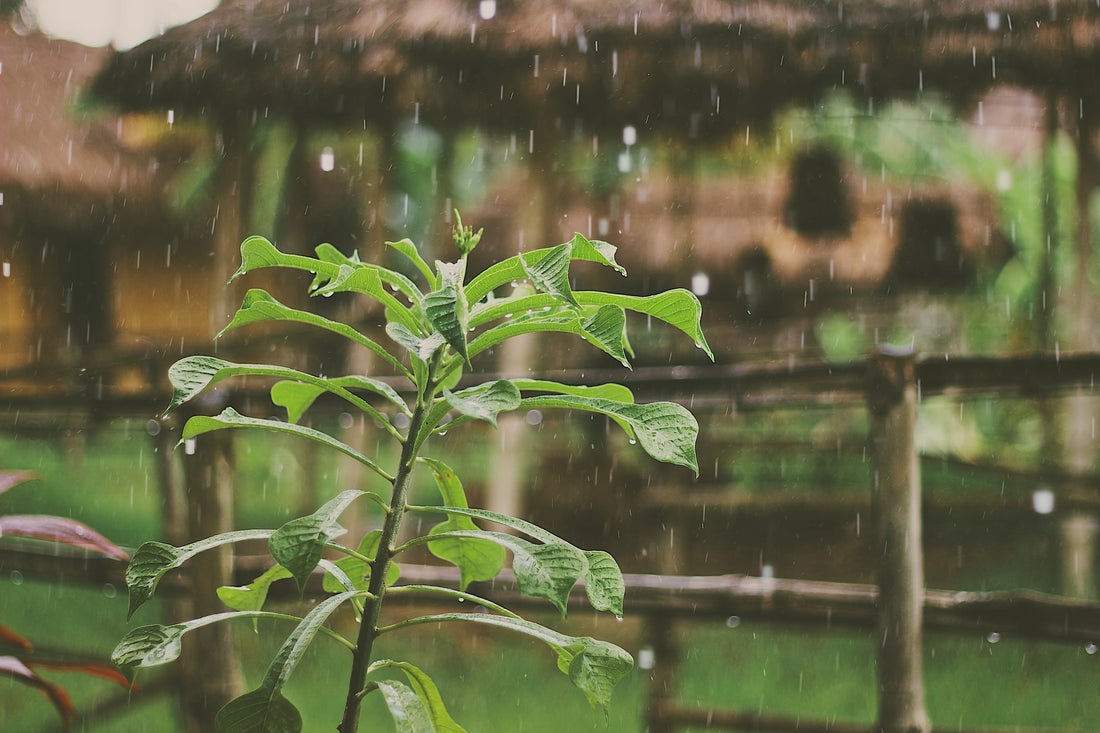Prior to large urban and suburban sprawl, the ground, forests, and oceans were enough to absorb and take in the rainwater as it fell. Now, since we've paved so much of the land, the natural processes are interrupted.
Instead of falling directly on soil and being quickly taken in, rain lands on asphalt, concrete, and buildings, where it turns into dense flowing streams with nowhere to go except the storm drains. As it flows across these flat, unporous surfaces, the water picks up chemicals, fertilizers, pet waste, leaked car fluids, pesticides, and oil, among other things. And, from the storm drains, this polluted water transits to our oceans, lakes, rivers, streams, and ponds, causing havoc along the way.
What Is A Rain Garden?
A rain garden is a specially designed patch of land or yard whose function is to collect and repurpose stormwater. During significant rainfalls, excess water runs off roofs, paved driveways, and other areas and is essentially wasted as it streams into storm drains or off the land. Rain gardens absorb the extra water, filter it, and apply it to plants nearby.
Not only do rain gardens take water that essentially would be wasted and put it to better use, but they also help prevent soggy yards and flooding. If you have a yard that frequently floods or turns into a series of muddy puddles, a rain garden may be just what you need. It's especially beneficial if you struggle with flooded basements and foundations due to the slope of your land.
A rain garden can be a series of small depressions or a larger stretch to fit your land's needs. Think of it like a small pond, but one that stores the water underground so plants' roots can access it easily. There is no standing water aboveground, so you don't have to worry about the unsightliness or turning the yard into a mosquito resort. One of the great things about rain gardens is their adaptability of construction, so you can design one that works for you.
Rain gardens use a set mixture of sand and compost that facilitates excellent water absorption. This mix also works to filter out pollutants like heavy metals and fertilizer. Downspouts are installed on the roof and directed to a special channel, so water naturally flows to the rain garden, where it can be processed. Installing a rain garden takes a bit of digging and the installation of spouts on roofs.
What Are The Benefits Of A Rain Garden
- Repurposing potentially wasted water
- Reduces or eliminates localized flooding, for example, basement floods, soggy yards, and water channels running through yards.
- Filters water, reducing the amount of chemicals that end up sitting in your yard or finding their way into the local waterways.
- Acts as a buffer between houses and storm drains so the drains don't become overwhelmed, clogged, or ineffective. This protects your community from drainage and flooding issues.
- Improves the stability of your yard, reducing erosion, water runoff, and providing more usable space.
- Potential tax break –water runoff is such a major issue in some communities that folks with rain gardens get tax breaks. Contact your local government to find out if this exists in your town. And, if not, maybe introduce it!
Rain Garden FAQS
- Rain gardens are not a breeding ground for mosquitoes or other problematic insects because there is no long-term standing water. There may be a few hours or a day at the most, but mosquitos want 7-12 days of standing water to lay and hatch their eggs.
- A rain garden is not a pond. They can be designed to include a pond if that's what you'd like, but that is not their primary function. One of the main points of a rain garden is that it enables the soil to absorb and collect more water beneath the surface.
- Rain gardens are low-maintenance once established. It's like having another little plant garden where you'll need to do some minimal watering and weeding over the years to keep plants in check.
- A rain garden isn't expensive if you can get some friends and family to help out with the initial digging. If you have to pay someone to do it, it can be a little expensive. Other than that, you'll just need to acquire some plants and downspouts for your gutters if you don't already have them.
Next week, we'll discuss ways to build rain gardens to fit any yard, small or large.



